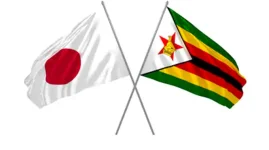Japan invested $5 million in a program to help Zimbabwe's small farmers grow more sesame for foreign buyers. The program teaches farming skills, helps with water systems, and connects farmers to markets. Many women in dry areas have joined this effort.
Mr. Masataka Nakamura from the Japanese Embassy visited fields in Mwenezi. He explained their money flows through the World Food Programme to support irrigation, training, and market research. Farmers like growing sesame because it survives during droughts when other crops fail.
Lloyd Masunda from Sustainable Agriculture Technology talked about how fast sesame farming has grown. His group trained farmers and helped them sell their crops. Before outside help came, farmers harvested very little. Last year, with WFP support, nearly 3,000 farmers produced 650 tons of sesame.
This growing season looks even better. Almost 11,300 farmers planted 6,600 hectares and should harvest about 3,300 tons. Zimbabwe started selling sesame abroad last year - 151 tons went to Japan and some to Mozambique. The Torture Corporation in Japan buys a lot, and buyers from India, China, and Mozambique want Zimbabwe's sesame, too.
Rural communities expect to earn around $2.7 million from this season's crop. Munyaradzi Gahadzikwa from WFP's Masvingo office said the project helps people in drought-hit areas. In Mwenezi alone, they support 3,500 struggling farmers with Japan's funding and work with local partners.
These farmers often had trouble feeding their families before. Thanks to sesame farming, they can put food on the table, eat better meals, and earn steady money.
Mr. Masataka Nakamura from the Japanese Embassy visited fields in Mwenezi. He explained their money flows through the World Food Programme to support irrigation, training, and market research. Farmers like growing sesame because it survives during droughts when other crops fail.
Lloyd Masunda from Sustainable Agriculture Technology talked about how fast sesame farming has grown. His group trained farmers and helped them sell their crops. Before outside help came, farmers harvested very little. Last year, with WFP support, nearly 3,000 farmers produced 650 tons of sesame.
This growing season looks even better. Almost 11,300 farmers planted 6,600 hectares and should harvest about 3,300 tons. Zimbabwe started selling sesame abroad last year - 151 tons went to Japan and some to Mozambique. The Torture Corporation in Japan buys a lot, and buyers from India, China, and Mozambique want Zimbabwe's sesame, too.
Rural communities expect to earn around $2.7 million from this season's crop. Munyaradzi Gahadzikwa from WFP's Masvingo office said the project helps people in drought-hit areas. In Mwenezi alone, they support 3,500 struggling farmers with Japan's funding and work with local partners.
These farmers often had trouble feeding their families before. Thanks to sesame farming, they can put food on the table, eat better meals, and earn steady money.












